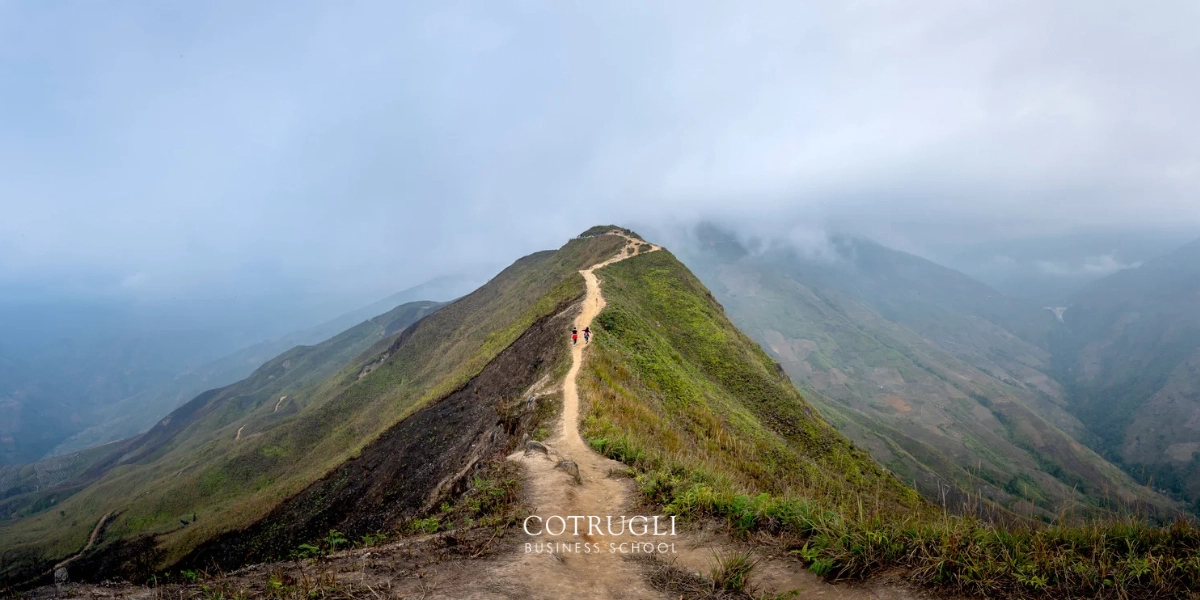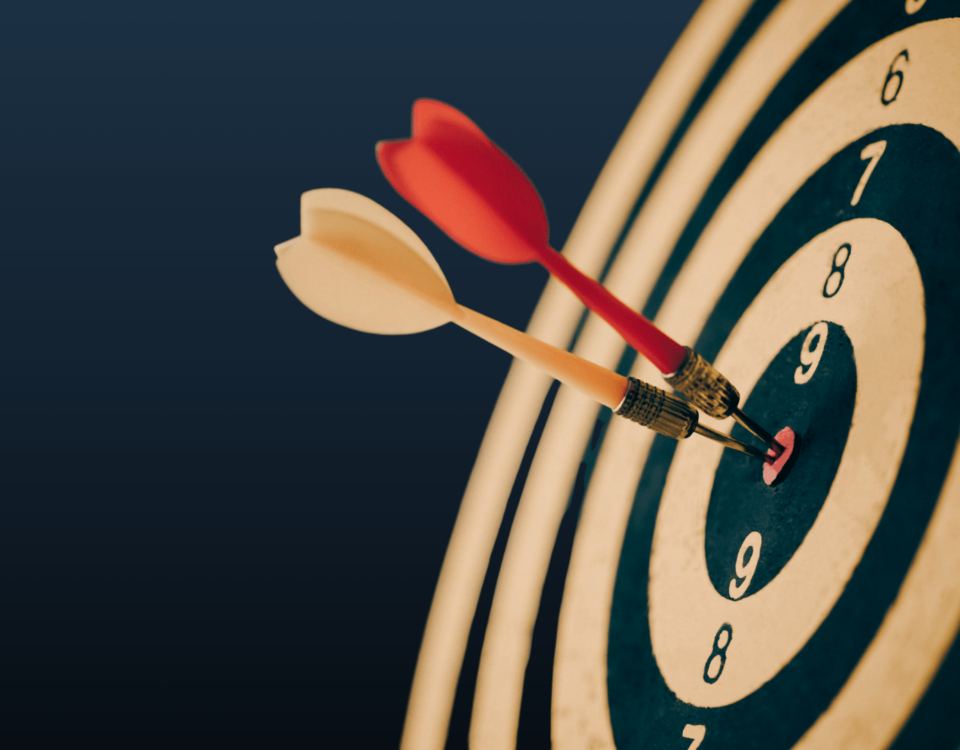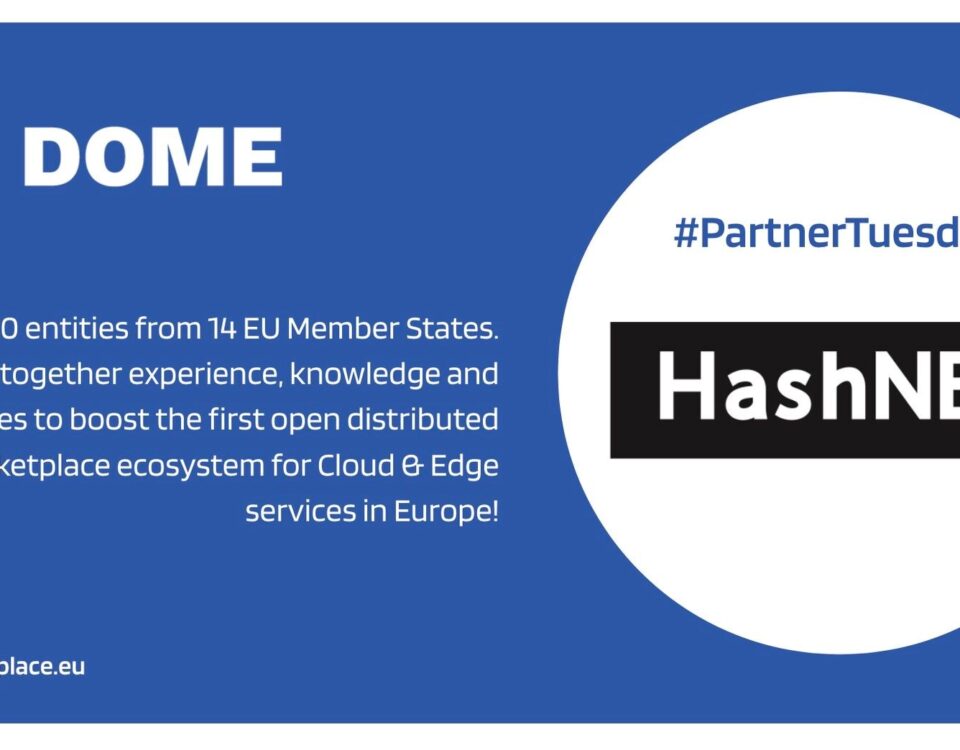
How many strategic plans does your company need?
13/09/2023
Success: What It Means and How to Measure It
18/09/2023
Which Path Are You Walking? – pt. 2
This is a world of many masters! There are webmasters, harbor masters and gang masters. And we all remember our Headmaster! You can spend years at University and become a master of your chosen subject, and graduate with your Master’s Degree. You can serve an apprenticeship and become a Master Craftsman. And you can serve your ‘discipleship’ and eventually become known as a Spiritual Master. However, if the Spiritual Master is a true master they would be unlikely to allow others to give them such a title. They would probably shun all titles as they easily become another false identity and therefore a contradiction to authentic spiritual teaching and practice, the core of which includes realizing that a ‘title’ is not what you are!
Last week we explored the path that the majority of us find ourselves walking for large parts of our day, if not our life i.e. the path of the slave. In essence, it means an absence of true inner freedom where freedom is lost when the “essential self” attaches to something or someone and, as a consequence, becomes “emotionally affected” when something happens to that something or someone. The result is always some form of emotional disturbance and therefore suffering. However, within the culture in which we are raised, we learn that this is natural and OK, and we have an industry called marketing, dedicated to helping us create and sustain our attachments! Our life is filled with emotional ups and downs, highs and lows, and we come to believe that that is what life is about, and seldom enquire into whether that is true or not, or that perhaps there may be another way to “do life”.
At first glance, it can seem that detachment and the absence of neediness must render us cold, uncaring, and living a reclusive, dull, flat life. However, if you do ask any spiritual master if you do decide to explore almost all spiritual wisdom, they all affirm that the pathway to real human happiness, not the happiness that is often confused with excitement, can only be walked when there is non-attachment and therefore selflessness. Perhaps we give ourselves a small reminder of this when at least once a year we do much giving and only a little receiving. It is then that we refresh and affirm our awareness that the deepest satisfaction in life is in the giving and not the taking. This has, at its heart, the shift from “holding on” (attachment) to “letting go” (detachment).
Even our current so-called economic and political “masters” at this time are articulating the underlying reason for our current financial crisis and its ripple effects is a combination of acquisitiveness, greed, and attachment. One of the most obvious signs that we are walking the highway of the slave is debt.
And so to the Path of the Master and the way back to true freedom, real happiness, and what most of us seek… peace of mind. After a lifetime of slavery, it’s not an easy path to see never mind walk. But then who said this grand adventure we call life would be easy? The path of the master, which really means the path of the “self-master”, begins and ends with determination.
The master has realized their life is entirely DETERMINED by them, their internal destiny (state of consciousness) and external destiny (worldy circumstances) is in their own hands. They have realized the only real enemy in life is their own ego, and that the ego takes birth the moment the self forgets its real identity and identifies with what it is not i.e. things, titles, people, places, beliefs, etc. So after a lifetime of creating the habit of “false identification” the master practices DISIDENTIFICATION. In doing so they are able to remain DETACHED because they know that only then is their energy, their awareness, attention, their intellect, completely free to practice the inner skill of DISCERNMENT without distraction because every day they have to make high-quality DECISIONS that will determine the DIRECTION of their and perhaps others lives. And because they are not distracted by any attachments they are able to be consistently DETERMINED to follow through on every decision and… “make it so”!
Determined
In many ways living a conscious life cannot begin until you fully realize that your destiny is in your hands. This sounds obvious but as long as there is the thought or feeling that you are a victim in any way, at any time, it means you have not fully realized and empowered yourself to take full responsibility for your destiny. Most think of destiny as something that is external and has to do with some location, a position, and perhaps some achievement in the future. But this is secondary. Your primary destiny has to do with your state of consciousness, your state of being, and the quality of your thoughts and feelings right here and right now. If they are negative in any way, and you are interested in being the master of your own creation, you will look for the cause of your uncomfortable thoughts/feelings and if you are prepared to look deeply enough you will always find the root cause is misidentification.
Disidentification
The most common mistake we all learn to make is to lose our sense of identity in something that we are not. It’s just that we don’t connect misidentification with our stress, our discomforts and our unhappiness, whatever form they may take. Our friends in marketing, however, spend much of their lives encouraging us while making it as easy as possible for us to identify with something that we are not. This can be an object, a smell, a place, or just a brand. But what happens then? Perhaps an easy example is in sport. Every weekend hundreds of thousands of mature adults will go and watch their team. When the other team scores they are sad i.e. unhappy, and when their team scores they become excited, believing they are happy. Why? Because their self-identity is lost in the team. They are attached to and identified with their team. The result is a swing in their emotions from sadness to excitement, where the excitement is confused with happiness. But it’s not real happiness, it’s excitement. And that is energy-draining, not life-enhancing. However, we don’t realize the inner mechanisms at play and we come to believe all this is normal and natural. Therefore we become happy being unhappy, happy to be excited and drained, without being aware that we are creating an “emotional addiction” within ourselves. It’s not long until we crave the next game or the next purchase! The emotions become our drugs and we can’t wait for our next hit. All because we attach to and identify with something we are not. This of course happens with many other things including people, places, and positions. Misidentification is our deepest habit, and therefore a challenging habit to “interrupt” and drop. One of the first signs that you are in the presence of a self-master is a total absence of any “emotional reaction” and the presence of true love. For they know, not only what they are, but what they are not!
Detachment
In stepping back and ceasing to identify with what we are not, we are essentially detached. This is often confused with a cold and uncaring approach to life. It is sometimes interpreted as a form of avoidance and a refusal to engage. But let’s say a friend has had a “run-in” with their boss and they are angry at what their boss said. You are their friend so they come to you and it’s as if all their anger is in a little brown bag and they want you to look into the bag because that’s what friends do… right? So you listen to their story and how they got so angry and of course, you agree with them and become angry with them. Because that’s what friends are for… right? In fact, you become even angrier than them and feel you want to go and “sort out” their boss. Because that’s what friends are for… right? This of course is like the fire engine arriving at the fire and instead of water coming out of the hose petrol comes out, and you both go up in the flames of anger together. So what do real friends do? They don’t add fire to fire, they don’t add to the suffering of the other, neither do they walk away and avoid listening. They remain detached but involved. This is an inner skill known as “detached involvement”. It simply means you listen to your friend without adding to their story, without judging any of the characters in the story, or becoming “emotionally” involved in their story. And as you listen they calm down naturally and become centred again. And that is one of the practical applications of detachment. It is not an uncaring response but a moment when greater care can be created, offered, and given. Whenever you practice detachment, or non-attachment or ‘standing back’ or letting go, you will notice the diminishment and eventual disappearance of your own emotion. And it’s only when there is no emotional disturbance (love is not an emotion) that your intellect (not your mind) is able to see clearly what is the most appropriate response in the situation. And there is the stability to deliver that response in reality.
Discernment
Like a third eye, it is your intellect that looks, sees, and discerns what is the right way to be, the right thing to do, and the right response to give in any given situation. But if the self is lost and misidentifying with what it is not, and therefore attached, there will be some kind of emotional upheaval. And that is like a ‘fog’ in front of the intellect. Like wearing glasses with frosted lenses, in the context of anger we sometimes call this frost the ‘red mist’. Why do you become angry? Because you have an image in your mind of how you would like someone to behave, and you have attached to and therefore identified with that image. And when they do something different you take it as a personal slight, and you generate anger towards them. But if you were not attached to and identified with that image, you would remain cool and able to connect with them with clarity, reason, care, and wisdom. You would be able to respond more proactively. It’s an unfortunate fact that most of our intellects have been fogged over so often for so long by reactive emotions that there is almost a permanent frosting of our inner eye. After a while, it’s too much hard work to clear this fog so we let the intellect shut down. It becomes lazy or goes to sleep altogether, and we allow our emotions to shape our actions in the form of “reactions”, and no longer allow our inner wisdom and our values to inform the creation of our responses. The master sees this inner state of affairs and corrects the quality of their actions by eliminating emotional agitations from their inner repertoire. This is why the self-master spends time in silence, in meditation, and turns the gaps between their activities into quiet moments of contemplation. They do this because every day, perhaps hundreds of times a day they, like all of us, have to make decisions.
Decisions
The master has taken time and given attention to disentangling the previously assimilated beliefs of others from their own values and their own innate wisdom. In due course, their “rational machinery” gradually becomes redundant as they cease to need to think things through. Instead, they are able to invoke and allow their deeper feelings, their intuitions, to emerge from their inner wisdom. Just as the hand of an experienced sailor on the tiller of a ship can “feel” through the tiller the currents beneath, so the master, with an undistracted (detached) awareness on the tiller of their intuition, can “feel” the currents of their intuitions deep within themselves. And as they receive and contemplate those “intuitions” they learn to trust their ability to shape their decisions based on those intuitions. The decision creating process is refined over time. Purified of its false beliefs (e.g. I am a victim…others are responsible for my happiness, etc.) and self-centered intentions, decision-making eventually becomes a natural function of intuition, a natural flow of wisdom, which crystallizes into doing the right thing in the right place at the right moment.
Direction
To the master the direction of their life “in the world” is secondary to the direction of their energy, their attention, and awareness, within themselves. They know that if their thoughts, attitudes, and actions are aligned with the right intention and motivation, which in turn are aligned with the true nature of the self (love and truth) then everything that “happens”, everything they may create in the world, will be of the highest quality. Where the path of the slave tends to be locked into ambition, achievement, and acquisition for oneself in the world, all future focussed, the masters’ path is free of such tensions between worldly success and failure, between have and have not, between now the then. The master knows that real wealth is already present within them and is concerned only to “gift” that wealth in whatever way is appropriate at the moment. Thus the master is free of the desire to acquire the best and free to give of their best. And as they do there arises a faith that the outer direction of their life i.e. whatever comes to meet them on their path, will reflect the inner state of their consciousness i.e. the quality of the energy they give out.
As we walk the path of the slave we tend to blindly believe, and go along with the prevailing culture. Stepping onto the path of our self-mastery means we dig beneath to see and challenge the principles, values, and beliefs of that culture. As you do what you discover is a self-perpetuating system based on either believing you are something that you are not (misidentification) or aspiring to become something that you are not (ambition/desire that leads to misidentification). And while it “seems” we have been living this way for as long as history can recall you will also notice it is the root of unhappiness, suffering, conflict, and disease. And you may realize it is not a way of life but in many ways a way of non-living. Much depends on how deeply one looks and what one is ‘ready’ to see.
And yet, once seen, “the master” sets out not to fix the system through resistance and revolution, for that only perpetuates it. The master understands that is futile, a distraction, and ultimately unnecessary. Their intuition reminds them that all is as it is meant to be in all places at all times. They simply live their truth, they live authentically, within the system, within the prevailing culture, knowing that if the way they live is authentic, if it is aligned to the truth of what they are, then that alone will have an effect called “influence” upon the system, upon the culture. And if there is still any fear that it may not have an “effect” it is the presence of that fear that reminds them they are still stuck in a false sense of who they are. The master has not yet emerged from the slave.
Question: What sticks out most powerfully for you in all that you read above? And why do you think it struck you that way?
Reflection: Using that powerful idea/insight as a starting point, write it in the middle of a blank page and then jot down around it any related ideas/insights of your own that come to your mind in association. See where it leads you. See what realizations you can spark within yourself for yourself.
Action: What two things could you actually do (turn into behavior) from the above?
Written by our professor Mike George.



